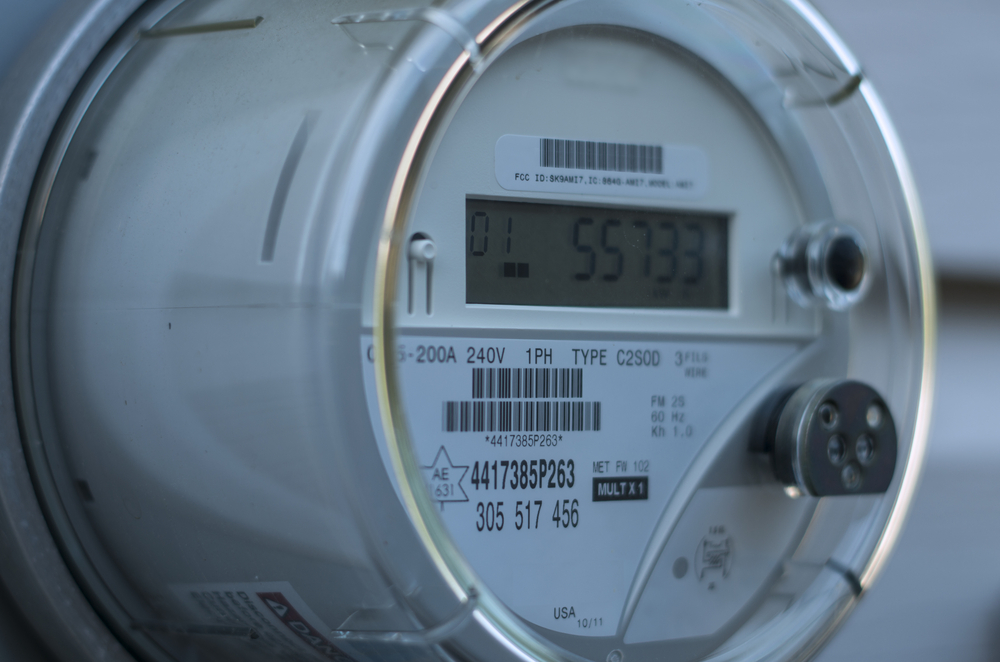Going Big with Utility Scale Power Purchase Agreements: The Future of Solar Renewable Energy Power Purchase Agreements
As a homeowner, I find myself unable to install solar panels on my property due to space constraints and regulatory limitations. However, I am thrilled to discover an exciting alternative – participating in community solar projects through utility-scale power purchase agreements (PPAs).
This trend towards power purchase agreement renewable energy sources, especially solar power, has caught my attention. The world is witnessing an unprecedented shift towards cleaner and more sustainable energy options. Solar energy, in particular, is leading the charge, with its global capacity growing by over 20% in 2020 alone, according to the International Energy Agency.
The reasons behind this remarkable growth are diverse and compelling. Falling solar panel prices, along with continuous advances in solar technology, have made solar power increasingly accessible and cost-effective. Moreover, there's a growing awareness among businesses and consumers about the importance of environmental conservation, which is further driving the adoption of solar energy solutions.

What is a Utility-Scale Solar Power Purchase Agreement?
Utility-scale solar power purchase agreements (PPAs) are a form of long-term power purchase agreements that provide a fixed-price contract for the sale of electricity generated from a large-scale solar facility.
Typically, utility-scale solar PPAs involve a solar energy developer that designs, builds, and operates the solar power facility, and a utility company or a large energy user that agrees to purchase the power generated by the facility for a specified period, usually ranging from 15 to 25 years.
Under the terms of the agreement, the developer sells the electricity generated by the solar facility at a predetermined rate to the buyer, who then distributes the electricity to its customers or uses it to power its own operations. The fixed pricing in a utility-scale solar is a PPA provides both parties with long-term cost certainty and allows them to plan for future energy needs.
How Does a Utility-Scale Solar Power Purchase Agreement Work?
The process of establishing a utility-scale solar introduction to the virtual power purchase Agreement (PPA) involves several detailed steps to ensure a successful and sustainable solar project:
Project Development
The solar energy developer thoroughly surveys and evaluates potential locations for the utility-scale solar project. This involves assessing factors such as solar irradiance, land availability, environmental impact, and proximity to transmission infrastructure. The developer then obtains the necessary permits, environmental clearances, and approvals from regulatory bodies to proceed with the project.
Negotiation
In this crucial phase, the developer engages in extensive negotiations with the utility company or energy user who will purchase the solar energy. The terms of the PPA are thoroughly discussed and finalized, covering key aspects such as the fixed price for the energy produced by the solar project, the duration of the agreement (typically long-term contracts), and other specific terms and conditions related to energy delivery, penalties, and termination clauses.
Financing
Securing adequate financing is vital for the successful execution of the utility-scale solar project. The developer may opt for a combination of equity investment and debt financing from banks, financial institutions, or even through project financing mechanisms. Additionally, the developer may seek support from government incentives, grants, or tax benefits to make the project financially viable.
Construction
Once financing is secured, the construction phase commences. The developer oversees the installation of solar panels, inverters, and other necessary equipment. Highly specialized engineers and contractors collaborate to build the solar facility according to the design and specifications. Stringent quality control measures are implemented to ensure the system's reliability and efficiency.
Commissioning
After construction is completed, the solar project undergoes rigorous testing and commissioning processes. These tests ensure that the solar plant is operating at its optimal capacity and can safely integrate with the grid. During this phase, any necessary adjustments or corrections are made to achieve peak performance.
Operation and Maintenance
Upon successful commissioning, the solar energy developer takes responsibility for the ongoing operation and maintenance of the utility-scale solar project. This includes regular inspections, cleaning of solar panels, equipment maintenance, and monitoring system performance to maximize energy production and efficiency. Proactive maintenance ensures the plant's longevity and reliable energy delivery throughout the PPA's duration.
Energy Delivery and Payment
With the solar plant fully operational, the developer begins supplying the generated energy to the utility company or energy user based on the terms agreed upon in the PPA. The utility company pays the developer for the energy received, usually at the fixed price specified in the agreement, providing a predictable revenue stream for the developer.
Types of Utility-Scale Solar Power Purchase Agreements:
Various types of power purchase agreements (PPAs) exist to cater to different needs and preferences. Below are three primary types of utility-scale solar PPAs, each offering distinct advantages and considerations:
- Fixed-price PPA: A fixed-price PPA establishes a predetermined, fixed price for the solar energy produced by the project throughout the entire duration of the agreement. This type of PPA offers a high level of stability and predictability for both the solar energy developer and the utility company or energy user. By knowing the exact cost of energy over the contract's lifespan, the utility company can effectively plan and budget its energy expenses. Simultaneously, the solar energy developer is assured of a steady and consistent revenue stream. The fixed-price PPA minimizes price fluctuations and mitigates financial risks associated with volatile energy markets.
- Indexed PPA: In contrast to a fixed-price PPA, an indexed PPA ties the price of solar energy to a specific benchmark index, such as the wholesale electricity price or an inflation rate. This type of PPA provides some level of price flexibility for the utility company or energy user, allowing them to benefit from potential reductions in energy costs should the benchmark index decrease. However, it also comes with inherent price volatility risks, as fluctuations in the benchmark index could lead to unpredictable energy expenses. To manage these risks, both parties may employ risk mitigation strategies or financial instruments.
- Hybrid PPA: A hybrid PPA incorporates features from both fixed-price and indexed PPAs, offering a blended approach to pricing. For example, the agreement may include a fixed-price component for the initial years of the contract, providing stability and cost predictability during that period. Afterward, the PPA may transition into an indexed component, allowing for potential price adjustments based on prevailing market conditions or a specified benchmark index. This type of PPA attempts to strike a balance between stability and flexibility, providing advantages from both models.

Benefits of Utility-Scale Solar Power Purchase Agreements:
Utility-scale solar Power Purchase Agreements (PPAs) offer numerous advantages to both the solar energy developer and the utility company or energy user. These benefits encompass various aspects and contribute to the widespread adoption of solar energy as a viable and sustainable source of power:
Reduced Costs
The increasing cost-competitiveness of solar energy compared to traditional fossil fuel-based sources, such as coal and natural gas, makes utility-scale solar PPAs an attractive option. By engaging in a long-term PPA, the utility company or energy user can secure a fixed price for solar energy, shielding them from potential energy price fluctuations. This predictability helps reduce their overall energy costs over the entire duration of the agreement, promoting financial stability and efficient resource planning.
Predictable Energy Supply
Solar energy is a dependable and predictable source of power, especially in regions with abundant sunshine. By opting for solar energy through a PPA, the utility company or energy user ensures a consistent and reliable energy supply, thus enhancing grid stability and energy security. This reliability is particularly beneficial during peak demand periods when solar energy generation coincides with higher energy consumption.
Environmental Benefits
Embracing solar energy through PPAs has significant environmental advantages. Solar power is clean and renewable, generating electricity without producing harmful greenhouse gas emissions or other pollutants associated with conventional fossil fuel-based energy generation. By shifting to solar energy, the utility company or energy user can actively contribute to reducing their carbon footprint and promoting sustainable energy practices, aligning with global climate and environmental goals.
Long-Term Stability
Utility-scale solar PPAs typically span long durations, often lasting 15-20 years or more. This extended commitment fosters stability for both the solar energy developer and the utility company or energy user. For the developer, a long-term PPA ensures a steady and predictable revenue stream, facilitating project financing and fostering continued investment in solar infrastructure. On the other hand, for the utility company or energy user, a long-term PPA provides a secure and stable energy supply at a fixed price, safeguarding them from short-term market volatility and uncertainties.
Economic Development
Utility-scale solar projects have a positive impact on local economies. When established in rural areas, these projects can stimulate economic growth by creating job opportunities during the construction, operation, and maintenance phases. Additionally, solar projects often engage local suppliers for materials and services, further contributing to economic development and community well-being.
Challenges of Utility-Scale Solar Power Purchase Agreements:
While utility-scale solar Power Purchase Agreements (PPAs) offer significant benefits, they also present several challenges that need to be addressed for successful project implementation:
Regulatory Uncertainty: The regulatory landscape for utility-scale solar projects can be intricate, especially in developing countries where regulations may lack clarity or undergo frequent changes. Navigating through the permitting process, securing necessary approvals, and complying with evolving policies can pose challenges and delays for solar energy developers and utility companies.
Financial Risk: Utility-scale solar projects demand substantial upfront investments in infrastructure, solar panels, inverters, and other equipment. The financial viability of the project relies on various factors, including solar irradiation levels, equipment performance, and ongoing maintenance costs. The uncertainty of these variables introduces financial risk for both the solar energy developer and the utility company or energy user involved in the PPA.
Grid Integration: Integrating large-scale solar projects into existing electrical grids can be complex and requires careful planning and coordination. Solar energy generation is intermittent and subject to weather conditions, which necessitates precise synchronization with the grid's demand patterns. Collaborating with utility companies and grid operators to ensure a stable and reliable grid integration is vital to avoid disruptions and maximize the benefits of solar energy integration.
Land Use Issues: Utility-scale solar projects require significant land area to accommodate the extensive solar panel arrays. This land use can sometimes lead to conflicts with local communities and other stakeholders, especially when projects encroach on agricultural land, ecologically sensitive areas, or traditional territories. Ensuring transparent and inclusive stakeholder engagement and addressing environmental concerns are essential for gaining community support and successful project implementation.
Financing and Bankability: Securing financing for utility-scale solar projects can be challenging, particularly in regions with limited access to financial resources or high interest rates. Projects need to demonstrate their bankability, that is, their ability to attract investors and lenders with a strong business case, stable revenue projections, and manageable risks. The lack of supportive financial mechanisms or perceived project risks can hinder the successful implementation of utility-scale solar PPAs.
Technological Advancements: Rapid technological advancements in the solar industry may introduce concerns about the obsolescence of solar equipment. Investing in large-scale solar projects requires careful consideration of the pace of technological improvements to ensure the project remains competitive and relevant throughout its operational lifespan.
Conclusion
As a homeowner who has been unable to install solar panels on my property due to space constraints and regulatory limitations, learning about utility-scale power purchase agreements (PPAs) and community solar projects has been an inspiring revelation. The future of solar energy is undoubtedly bright, and witnessing the unprecedented shift towards renewable sources fills me with hope and excitement.
The remarkable growth of solar power, with global capacity increasing by over 20% in 2020 alone, is a testament to the increasing awareness of the importance of sustainability and environmental conservation. Falling solar panel prices and continuous technological advancements have made solar energy increasingly accessible and cost-effective, making it a viable option for businesses and homeowners alike.
Sources
U.S. Department of Energy. “Utility-Scale Solar.” www.energy.gov.

